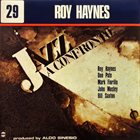

The cowboy was a positive image, as opposed to the hillbilly, which was considered a negative image. Were record companies and advertisers similarly involved in creating the cowboy image? The hillbilly image was created in part to help sell the records or promote “barn dance” radio shows. You say the singing cowboy films of the 1930s and ’40s brought country music into the realm of pop music and that the cowboy replaced the hillbilly as country’s mascot of sorts. Dale Evans changed that a bit, but not until she got into television when were openly married and she was running a café. Patsy Montana had that first big hit, “I Want to Be a Cowboy’s Sweetheart,” but women were relegated to pretty much a subservient role – the schoolmarm, the innocent spoiled brat, those kind of roles. What about cowgirls? What role did musicians such as Dale Evans and the Girls of the Golden West play in the evolution of cowboy music and culture? Gene Autry, known as the Singing Cowboy, epitomized the western star, performing in movies, television and radio for more than three decades.

They chased bad guys, but they also had a telephone and a phonograph. People rode horses, but they also drove pick-up trucks. One of the things he did in his movies was put the old West in the contemporary West. But he had an appealing voice, he had that presence, he kind of had that “next-door” look, and he was a great singer.
Cowboy jerry haynes musition movie#
The movie people didn’t like him – they thought he was too feminine, not masculine enough to be a cowboy hero. And Gene Autry was the first singing cowboy star.

Coming out of the early 1930s, Prohibition, gangsters and the “flaming youth” movies, the cowboy was a good, clean alternative. Tom Mix dressed like somebody who didn’t work with cattle he brought the glamour in. Well, the first big western hit was “When the Work’s All Done This Fall” by a guy named Carl Sprague. Who were the most popular early cowboy heroes of film and radio? In music, the comes along a little later in the 1930s with Sons of the Pioneers, Gene Autry and Roy Rogers in the singing cowboy movies. Then when the early movies came, westerns were popular. Buffalo Bill had a guy called “King of the Cowboys” – he was a romantic hero. He kind of glamourized the West, and so did the dime novels. When and how did the cowboy become a big player in American popular culture?īack with Buffalo Bill and his Wild West Shows. But less than 2 percent lives on farms or ranches today.Īs you point out, there’s a difference between a “real” working cowboy and the romantic, heroic figure that emerged to represent country music. Western music is loyal to a sound and an image and a lifestyle. Country’s not loyal to a sound – it’s loyal to the market. At the same time there’s this thriving subgenre of people who work on ranches or own ranches and are doing western things and western music – reviving it. In movies like Urban Cowboy, works not on a ranch but in the oil industry. The country music cowboy is a guy who drives a pick-up truck – he doesn’t have a horse, there’s no cattle. The western genre has pretty much disappeared. It deals with the West – the beauty of the West, western stories. The difference in western is in the lyrics. How do you define western music? What is its relationship to country music?

I talked with Cusic about how performers have fashioned their cowboy look and why Americans are still drawn to this image.įrom the late 1940s through the 1960s there was a musical genre called “country and western,” but today there are two different camps – country music and western music. Most of the profiles – from Gene Autry to George Strait – were first published in the magazine The Western Way, for which Cusic is editor. His book profiles artists who have embraced and promoted ideas about cowboys and the American West, including performers of western music, which he identifies as an offshoot of country music. Cusic is a music historian and professor of music business at Belmont University in Nashville. Don Cusic’s new book, The Cowboy in Country Music: An Historical Survey with Artist Profiles (McFarland), explores how the cowboy became an American pop culture icon and the face of country music.


 0 kommentar(er)
0 kommentar(er)
